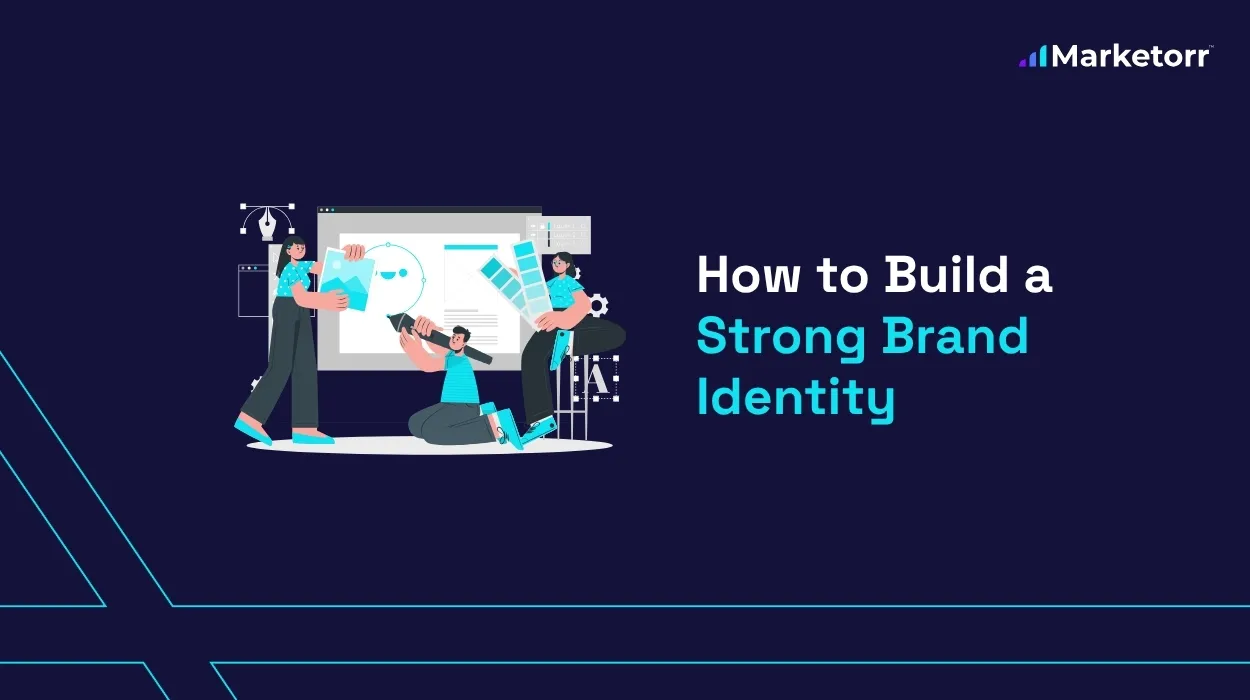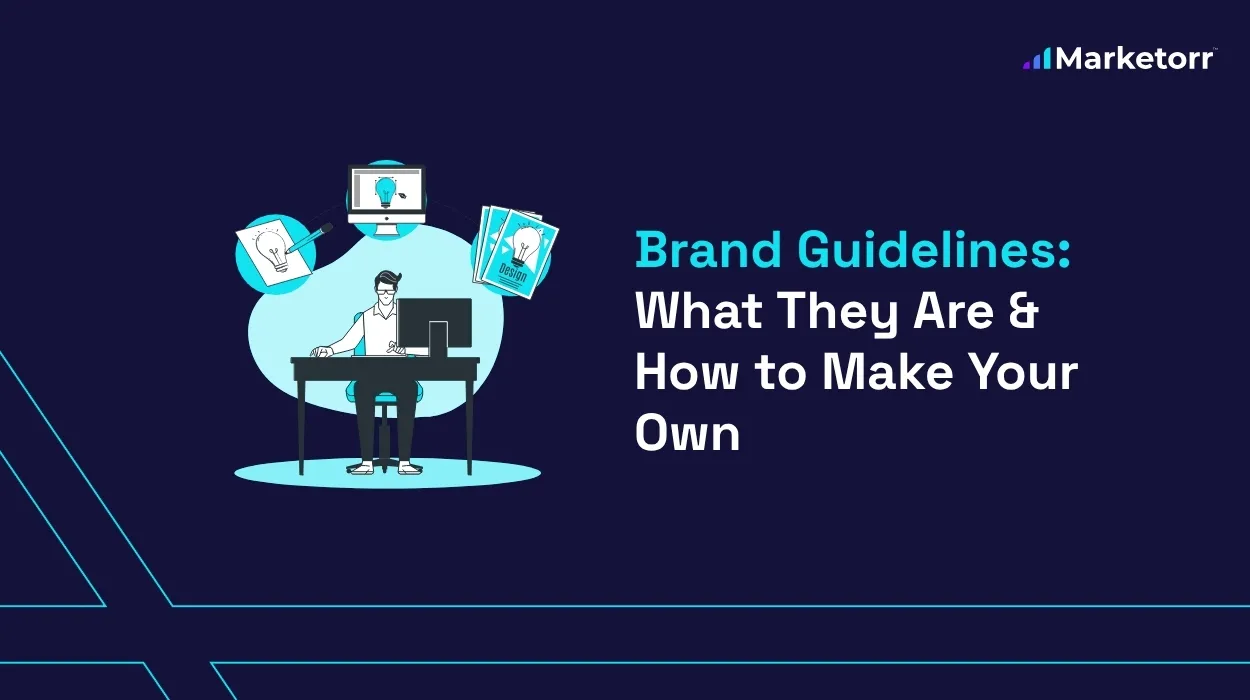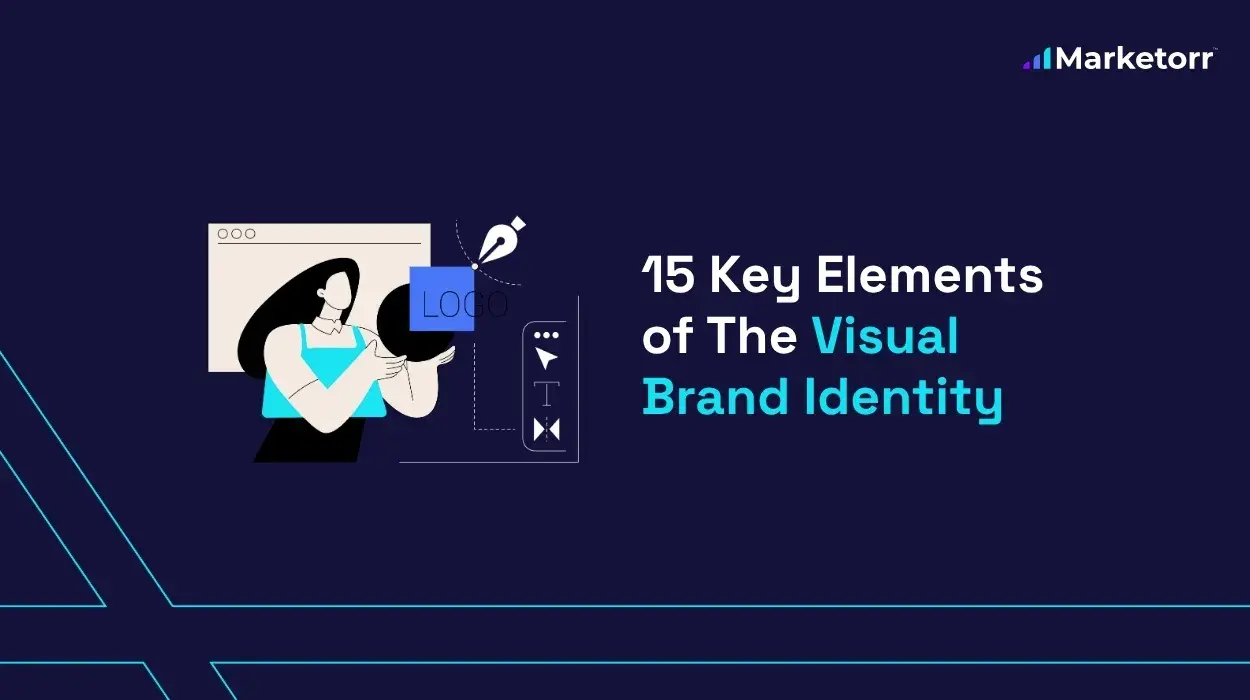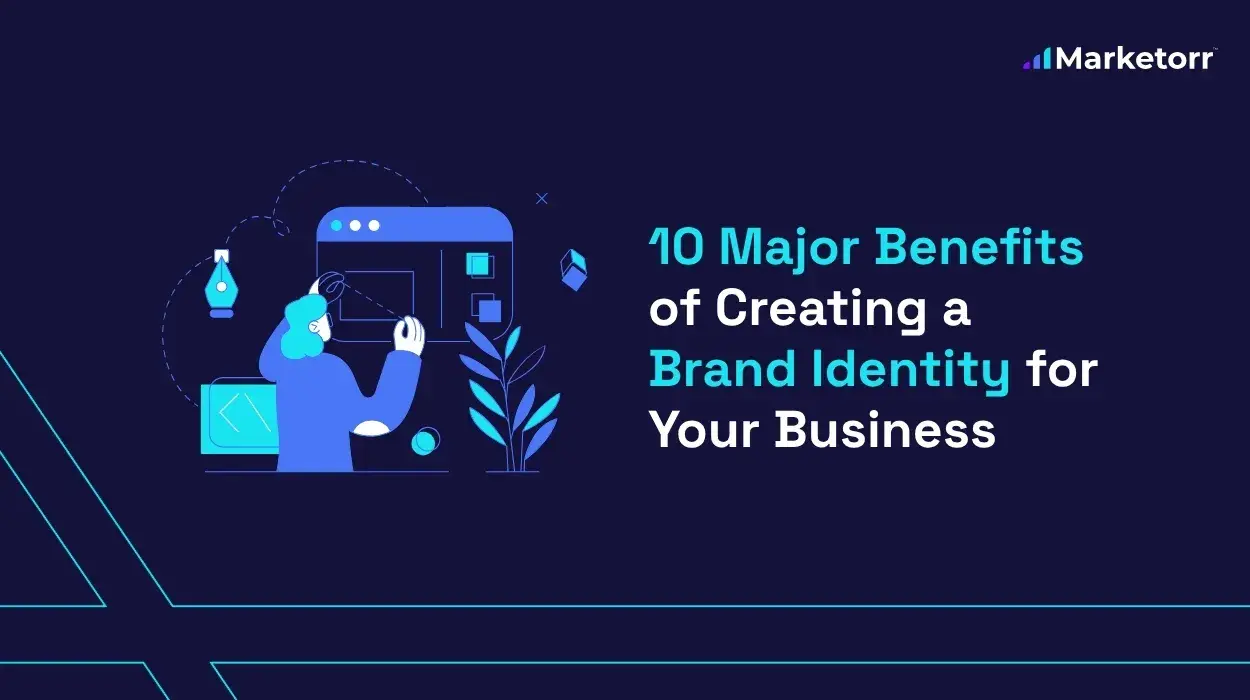Backlinks remain one of Google’s top three ranking factors, influencing how content is indexed, ranked, and trusted online. A 2024 study by Ahrefs found that 91% of pages receive no organic traffic from Google, primarily due to a lack of quality backlinks.
While algorithm updates now emphasize contextual relevance and authority over volume, backlinks still act as a foundational SEO signal. Identifying the right types is crucial, as not all links improve rankings, and some can harm them.
Understanding the most effective backlink strategies in today’s semantic search landscape helps ensure sustainable visibility, higher domain authority, and long-term organic growth.
In this guide, I will explain, what backlinks are, why they’re still important for SEO, and the 20 types that actually work today.
What Are Backlinks in SEO?
Backlinks are links from one website to another. They act like recommendations on the internet. When a site links to your content, it tells search engines your page is useful and trustworthy.
These links help search engines decide which pages deserve higher rankings. The more high-quality backlinks you have, the better your chances of showing up in search results. However, not all backlinks are equal. Some help rankings, while others can harm your site.
Search engines like Google use backlinks as part of their algorithm to measure site authority. A page with strong, relevant backlinks usually performs better than one with none. But the quality and context of those links matter more than just numbers.

Why Backlinks Are Important for Search Engines
Backlinks help search engines measure the authority and usefulness of a webpage. When other websites link to yours, it shows that your content is trustworthy and valuable.
Google and other search engines look at three main things when analyzing backlinks: authority, relevance, and placement.
Authority and Trust of the Linking Domain
A backlink from a high-authority website carries more weight than one from a low-quality source. Search engines trust websites that have built credibility over time, so links from those sites can boost your own rankings.
For example, getting a link from a well-known media outlet or industry leader has much more SEO value than a link from a random blog with no traffic or audience.
Relevance of Linking Page Content
It’s not just about authority. Relevance matters just as much. A backlink from a site that shares your niche tells search engines your content is aligned with a specific topic.
If you run a travel blog and get a backlink from a digital marketing site, that may not help much. But if you’re linked by a tourism board or a well-known travel magazine, it strengthens your site’s topical authority.
Link Placement and Contextual Signals
Where the link appears on a page can impact how useful it is for SEO. A link placed naturally inside a paragraph or a main body of an article performs better than one in a footer or sidebar.
Search engines also consider the anchor text — the clickable words used in the link. Relevant anchor text gives more context to the link and helps your page rank for the right keywords.
20 Types of Backlinks That Improve SEO Performance
There are many types of backlinks available today, but only a few genuinely help improve search rankings.
In 2025, search engines prioritize backlinks that are earned naturally, placed in relevant content, and come from trusted sources. Below is a complete list of backlink types that actually improve SEO when used the right way.

Backlink Types List:
| NO. | Backlink Types | No. | Backlinks type |
| 1 | Editorial Backlinks | 11 | HARO and Journalist Backlinks |
| 2 | Guest Post Backlinks | 12 | Local Citation Backlinks |
| 3 | Business Profile Backlinks | 13 | Event or Conference Page Backlinks |
| 4 | Backlinks from Resource Pages | 14 | Badge Backlinks |
| 5 | Backlinks from Tools or Free Resources | 15 | Testimonial Backlinks |
| 6 | Image and Infographic Backlinks | 16 | Review and Blogger Outreach Links |
| 7 | Videos and YouTube Backlinks | 17 | Forum and Q&A Backlinks (Used Correctly) |
| 8 | Social Media Backlinks | 18 | Content Syndication Backlinks |
| 9 | Webinar or Presentation Backlinks | 19 | Podcast Guest Backlinks |
| 10 | Unlinked Brand Mentions Turned Backlinks | 20 | Niche Directory Backlinks |
Let’s take a closer look at each of these and understand why they work and how you can benefit from them.
1. Editorial Backlinks
Editorial backlinks are the most trusted and effective backlinks in SEO. These links are earned naturally when someone includes your content in their article because they found it helpful, original, or worth referencing. You don’t need to ask for these links, they happen when your content truly adds value.
Search engines give editorial links more weight because they usually come from high-quality websites and are placed in the middle of relevant content. To get these links, you need to publish content that solves a problem, offers unique data, or explains something better than others.
For example, a marketing blog might quote your research on SEO trends and link to your full study in their article.
2. Guest Post Backlinks
Guest post backlinks come from writing content for another website in your industry. In exchange for your contribution, you usually get to include a link back to your site. These links are placed either inside the article or in your author bio.
This method works well when the site is relevant, has a real audience, and publishes quality content. Guest posts not only earn backlinks but also help you build your reputation and reach new readers. The key is to write something valuable for the host site.
For example, if you run a digital marketing agency and contribute an article about local SEO tips to a business blog, you can include a backlink to your full local SEO guide.
3. Business Profile Backlinks
Business profile backlinks are created when you list your company on trusted platforms like Google Business, Yelp, Crunchbase, or other directories. Most of these platforms allow you to add your website link in the profile, which creates a backlink.
These links help search engines verify your business and improve your presence in local search results. They also build credibility with users who find your business online. Consistency matters, so always use the same business name, address, phone number, and URL across all profiles.
For example, a backlink from your Google Business listing helps confirm that your website belongs to a real business and supports your local SEO.
4. Backlinks from Resource Pages
Resource page backlinks come from web pages that list recommended links on a specific topic. These pages are designed to help readers find useful tools, guides, or references. If your content is helpful and relevant, you can request the site owner to include your link in their resource list.
These links are valuable because they are often surrounded by related content and are placed with the intent of helping readers. Getting listed on high-quality resource pages builds trust and can bring regular referral traffic.
For example, if your website offers a free SEO audit checklist, you can pitch it to be included in a blog post titled “Top Free Marketing Resources for Small Businesses.”
5. Backlinks from Tools or Free Resources
If your site offers free tools, templates, or downloadable resources, you have a strong chance of earning backlinks. People love to link to things that make their lives easier. When you create something that solves a specific problem, others will naturally reference it.
This type of backlink often comes from blog posts, reviews, or how-to articles that recommend useful tools to their audience. The more original and user-friendly your tool is, the more likely it is to be shared and linked.
For example, if you create a free blog title generator and a content marketing blog includes it in their article about writing better headlines, that backlink adds SEO value and bring traffic.
6. Image and Infographic Backlinks
Visual content like infographics, charts, or data visuals often gets shared across the web. When other sites use your images and credit your website with a link, you earn a backlink. This works especially well if your visuals are informative, easy to understand, and visually appealing.
To encourage backlinks, always include your website or brand name on the image and make it easy for others to embed the content. Infographics that explain complex topics or present fresh data tend to attract the most links.
For example, if you design an infographic about how search engines rank websites, and a blog uses it in their SEO tutorial with a credit link, that becomes a high-quality image backlink.
7. Video and YouTube Backlinks
Videos can generate backlinks in multiple ways. If you upload videos to YouTube or your website and include a link in the description or video content, that creates a backlink. Also, when people embed or mention your video on their own websites, they often link to your site for more details.
Even though many of these links are nofollow, they still bring traffic and visibility. More importantly, when your video gets shared by other websites, it increases the chance of earning additional backlinks.
For example, if you publish a video explaining how to perform a technical SEO audit and a marketing blog embeds it and links to your full written guide, you benefit from both traffic and SEO authority.
8. Social Media Backlinks
Social media backlinks come from posts or profiles that link to your website. While most social platforms use nofollow links, they still help your content reach a wider audience. When people discover your content on social media, they might link to it from their own blogs or websites.
These backlinks support your visibility and improve the chances of earning organic links from others. Sharing high-value content regularly on social media helps build brand awareness and link opportunities.
For example, if someone shares your blog post on LinkedIn and a newsletter editor sees it and adds it to their next issue with a link, you’ve earned a new backlink through social media exposure.
9. Webinar or Presentation Backlinks
When you host or speak at a webinar, you often get featured on event pages, partner websites, or recap articles. These pages typically include a link to your website in your speaker bio or event description. You can also upload your presentation slides to platforms like SlideShare and add a link there.
These backlinks work well for building topical authority, especially in professional or educational niches. They are often placed in relevant, well-organized content, which adds extra SEO value.
For example, if you’re invited to speak about content marketing trends in a webinar and the event host links to your agency’s homepage, that’s a credible and relevant backlink.
10. Unlinked Brand Mentions Turned Backlinks
Sometimes other websites mention your brand name but forget to link to your website. These are known as unlinked mentions. You can turn them into backlinks by reaching out to the site owner and politely asking them to add the link.
This method works well because the author already knows your brand and chose to mention it. Adding a link just makes their content more complete. Use tools to monitor brand mentions and catch these opportunities.
For example, if a blogger writes about your tool or service but doesn’t include a clickable link to your site, you can follow up and request that backlink to turn a mention into SEO value.
11. HARO and Journalist Backlinks
HARO (Help a Reporter Out) is a platform that connects journalists with expert sources for their stories.
If your response adds real value to a journalist’s article, they may include a backlink to your website.
For example, a marketing consultant answering a query about digital trends may get featured in Business Insider with a backlink. These links are powerful because they usually come from high-authority media domains and drive referral traffic, credibility, and SEO strength.
12. Local Citation Backlinks
Local citation backlinks are earned when your business is listed on local directories that include your name, address, phone number, and website link.
These listings help search engines verify your business’s location and trustworthiness. For example, adding your business to platforms like Yelp or Bing Places ensures visibility in local searches.
To improve SEO impact, ensure your business details (NAP) are consistent across all directories. This is especially important for businesses targeting geo-specific traffic.
13. Event or Conference Page Backlinks
If your business hosts, sponsors, or speaks at an event, there’s often an opportunity to get featured on the event’s official website.
These backlinks frequently come from .org, .edu, or high-authority domains. For instance, if you sponsor a digital marketing summit, the conference page may list your business name with a backlink.
These links are not only valuable for SEO but also position your brand within credible professional circles.
14. Badge Backlinks
Badge backlinks are earned when you create recognition programs or award badges that others display on their websites, often with a link back to your original content.
Suppose you publish a post ranking the “Top 10 Marketing Tools of 2025.” The companies featured may place a badge on their site linking back to your list. This technique generates contextual backlinks while giving others a reason to promote your content.
15. Testimonial Backlinks
Many companies include user testimonials on their websites to build credibility, often with a backlink to the user’s website.
If you’re a customer of a SaaS tool or a service provider, write a thoughtful testimonial and send it to them. For example, a short review you submit for your email marketing tool may appear on their homepage with a backlink to your agency site. This gives you a valuable link from a relevant, trusted domain.
16. Review and Blogger Outreach Links
Product reviews and influencer mentions are a natural way to earn backlinks, especially when done through genuine outreach.
You can send your product or service to relevant bloggers or YouTubers for honest feedback. For example, a tech blogger reviewing your SEO tool may publish a detailed post with a backlink to your pricing page. These links are especially strong when they come from niche-specific websites with engaged audiences.
17. Forum and Q&A Backlinks (Used Correctly)
When used carefully, forums and Q&A platforms like Reddit, Quora, and niche community sites can drive quality backlinks and traffic.
Let’s say someone on a marketing forum is asking how to improve link building. You provide a valuable answer and include a link to your detailed guide. Because the context is relevant and the link adds value, it can pass both SEO signals and engagement benefits. Always focus on quality, not quantity, in these platforms.
18. Content Syndication Backlinks
Content syndication involves republishing your blog posts on platforms with wider reach, and often includes a backlink to the original version.
For instance, if you repost your SEO strategy article on Medium or Business2Community, the platform includes a canonical or standard link back to your main site. While many of these are nofollow, they help you reach new audiences and increase the chance of organic, dofollow links from future readers.
19. Podcast Guest Backlinks
Being interviewed as a guest on a podcast is not only great for authority, it usually comes with a backlink from the podcast’s website or show notes.
For example, if you appear on a marketing podcast discussing content strategy, the host might include a link to your homepage or a relevant blog post in the episode notes. Many shows also publish full transcripts, which may link to other internal pages, improving your topical relevance in organic search.
20. Niche Directory Backlinks
Unlike general web directories, niche directories focus on specific industries and usually provide more relevant and trusted backlinks.
If you run a digital agency, getting listed on directories like Moz’s Agency Directory or MarketingTerms strengthens your backlink profile within the SEO and digital marketing niche. These links are more valuable than generic ones because they improve semantic association in your specific field.
Types of Backlinks to Avoid
Not all backlinks are good for SEO. Some can trigger Google penalties, others simply get ignored and a few might even drag down your rankings.
Understanding which links are harmful helps you build a clean, trusted backlink profile that performs well in search.
Link Schemes and Paid Links Without Proper Tagging
Search engines want backlinks to be earned naturally. If links are bought or exchanged without disclosure, they’re considered manipulative.
This is one of the most common violations Google acts against, especially in competitive industries.
What to avoid:
- Buying backlinks from link sellers or marketplaces
- Swapping links with other websites in bulk (“you link to me, I link to you”)
- Sponsored posts without proper tags (rel=”sponsored” or rel=”nofollow”)
Why it hurts:
Google’s spam systems detect link schemes quickly. If you’re caught, your rankings may drop—or worse, your entire site could receive a manual action. Even if not penalized, these links rarely provide long-term SEO value.
Spammy Blog Comments and Forum Profile Links
Comment sections and forums used to be easy places to drop links. But those days are over.
Google now treats low-effort, irrelevant comment links as spam. Even if they’re not penalized, they’re ignored by the algorithm.
Red flags to watch:
- Generic comments like “Nice post!” with a link back to your site
- Forum profiles created just to add a homepage link
- Posts made without real contribution to the discussion
Better approach:
If you’re engaging in communities like Quora, Reddit, or niche forums, focus on helpful responses. If a link is truly relevant and adds value, it might be allowed, but always prioritize the user, not the backlink.
Low-Quality Directory Links
Submitting your site to hundreds of web directories doesn’t build authority. In fact, it often signals low-effort SEO.
Most free directories today are poorly maintained or filled with unrelated content, which makes the backlinks useless at best, and spammy at worst.
Avoid directories that:
- Have no editorial process
- Accept any site in any industry
- Appear outdated or filled with broken links
- Are flagged as link farms by SEO tools (like Ahrefs or Semrush)
What works instead:
Use well-known, niche-specific directories where users actually search for businesses or services. Examples include Clutch (for agencies), Crunchbase (for startups), or industry chamber directories.
Press Releases With No Actual News
Press releases are not link-building tools, they’re news distribution tools. If there’s no real announcement, they won’t earn coverage or links.
Search engines also recognize when press releases are used purely to build backlinks. Syndicated links from press release distribution platforms are often nofollow and may get ignored entirely.
Don’t waste time on:
- Press releases for blog updates, minor internal changes, or vague milestones
- Over-optimized anchor text stuffed into the press release body
- Low-quality PR distribution services with no editorial review
Best use of PR:
Announce something meaningful, new product launches, company mergers, industry awards, or proprietary research. That’s what earns attention and legitimate backlinks from journalists and industry sites.
Private Blog Network (PBN) Links
Private Blog Networks are a series of sites owned by the same person or group, built just to link to “money sites.”
While they may seem like a shortcut to rankings, they’re risky. Google regularly updates its algorithms to detect PBNs. Once identified, those backlinks are either deindexed or result in manual penalties.
Common PBN signals:
- Dozens of unrelated blogs linking to each other
- Thin or low-quality content reused across multiple domains
- Hidden ownership details, expired domains, or low domain diversity
Why to avoid them:
You might see initial ranking gains, but they rarely last. Once the network is flagged, your entire backlink strategy can collapse. The long-term cost far outweighs the short-term benefit.
How to Build High-Quality Backlinks Ethically
Building backlinks in 2025 is no longer about shortcuts or mass submissions. It’s about strategy, relevance, and trust. Earning quality backlinks means creating content that people genuinely want to reference and share.

Below are some of the most reliable, ethical methods to build backlinks that actually work.
1. Create Linkable Content Assets
If your content is useful, original, or insightful, people will naturally link to it.
This includes well-researched guides, industry surveys, original data, visual explainers, or tools like calculators and templates. These resources serve as helpful references that other websites and blogs want to cite.
For example, a marketing agency that publishes an annual industry report is more likely to get cited in news articles or thought leadership blogs. Over time, this builds authority and trust in your domain.
2. Conduct Targeted Outreach
Reaching out to other websites still works, but only when done with care and relevance.
Start by identifying sites that have already linked to similar topics. Then contact them with a message that explains how your content adds more value or updates outdated information. Avoid mass emails. Personalization increases your chances of success.
For instance, if you’ve written a better version of a popular SEO checklist, offer it to bloggers who’ve linked to older checklists. Keep the outreach brief, helpful, and respectful.
3. Use Digital PR and Data Storytelling
Press coverage and backlinks often go hand in hand when there’s something worth sharing.
If your brand publishes research or insights backed by real numbers, pitch the story to industry reporters, bloggers, or digital magazines. People are more likely to link to credible data, especially when it’s presented with clear headlines or visuals.
4. Reverse Engineer Competitor Backlinks
Looking at who links to your competitors can give you a list of sites likely to link to you too.
Use tools like Ahrefs, SEMrush, or Moz Link Explorer to analyze their backlink profiles. Look for pages that mention similar topics or keywords, and ask yourself: can I create something better, deeper, or more current?
This strategy doesn’t just help you get links. It also helps you understand what type of content is performing well in your niche.
5. Repurpose Content Across Different Formats
Sometimes people miss your blog post but they might find your infographic or video version of the same content.
By turning a guide into multiple formats, like videos, podcasts, carousel slides, or infographics that open doors to different platforms. Each format can earn new backlinks from different sources like video sites, design blogs, or newsletters.
The more formats you use, the more opportunities your content has to travel and get referenced.
6. Strengthen New Pages with Internal Linking
While internal links don’t count as backlinks from other domains, they help Google understand the structure and importance of your pages.
When you link from your existing high-traffic pages to a new blog or landing page, you help search engines find and index the content faster. This also passes value internally, helping new pages gain visibility without waiting for external backlinks.
A good internal linking strategy supports user experience and boosts site authorit and they don’t violate any rules.
Tools to Monitor, Analyze, and Improve Your Backlink Profile
Tracking your backlinks is essential for maintaining SEO health and spotting new opportunities.
Several tools help you monitor link quality, detect spammy links, and understand how your backlink profile evolves over time.
- Ahrefs is one of the most popular SEO tools for backlink analysis. It shows you the total number of backlinks, referring domains, domain ratings, anchor texts, and even lost or broken links. The “Link Intersect” feature helps you find sites that link to your competitors but not to you.
- SEMrush offers a detailed backlink audit tool that flags potentially toxic links. It also includes outreach functionalities and shows link acquisition trends, which is helpful for tracking campaign effectiveness.
- Google Search Console provides a free way to view top linked pages and linking domains. While it’s less detailed than premium tools, it’s useful for spotting unusual activity or confirming if new backlinks have been indexed.
- Majestic SEO focuses on link trustworthiness. It offers two main metrics, Trust Flow and Citation Flow that help you determine how reliable a backlink might be, especially in competitive niches.
- BuzzSumo is excellent for finding content that earns the most links in your niche. It helps you understand what type of articles, headlines, or formats attract natural backlinks, making it easier to replicate success.
Conclusion
Backlinks remain one of the most critical elements of SEO in 2025 but quality far outweighs quantity.
Gone are the days of mass directory submissions and comment spam.
Today’s successful backlink strategies are based on value, relevance, and trust. The 20 backlink types explored in this article not only support higher rankings but also drive genuine referral traffic and brand credibility.
Equally important is avoiding harmful practices. Spammy links, low-quality directories, and link schemes not only fail to deliver results, they can put your domain at risk. A clean, ethical link-building approach ensures long-term growth and sustainability.





